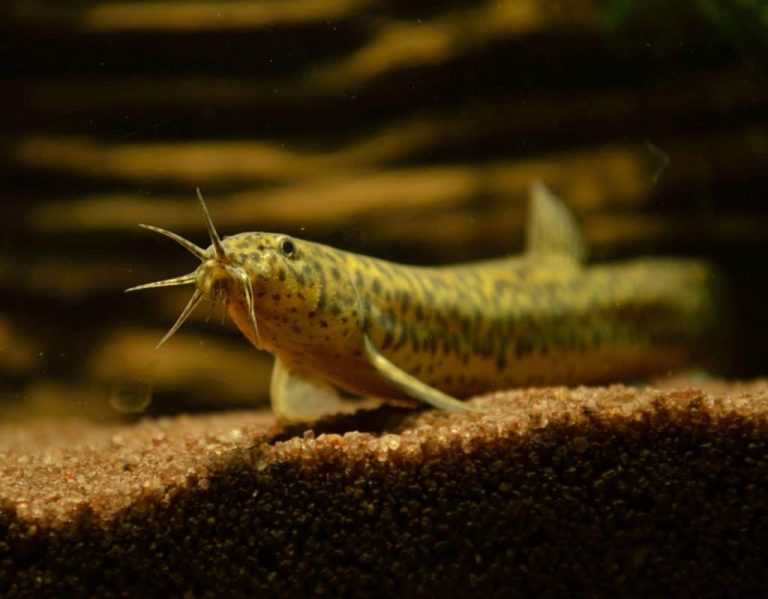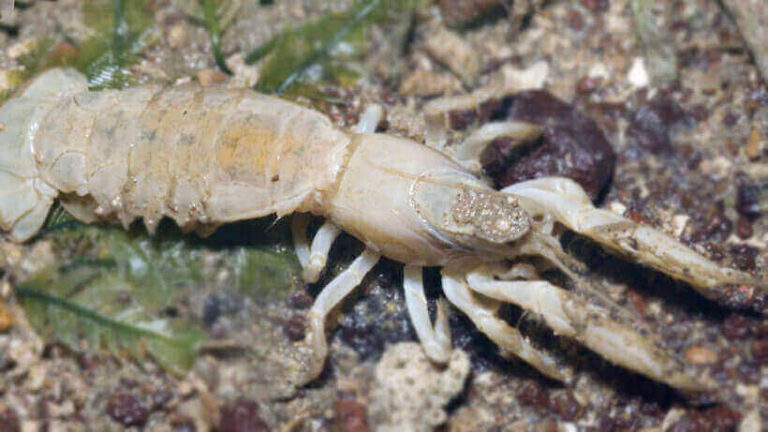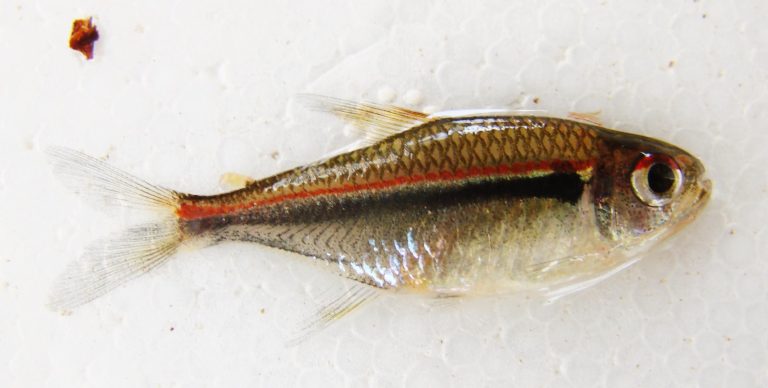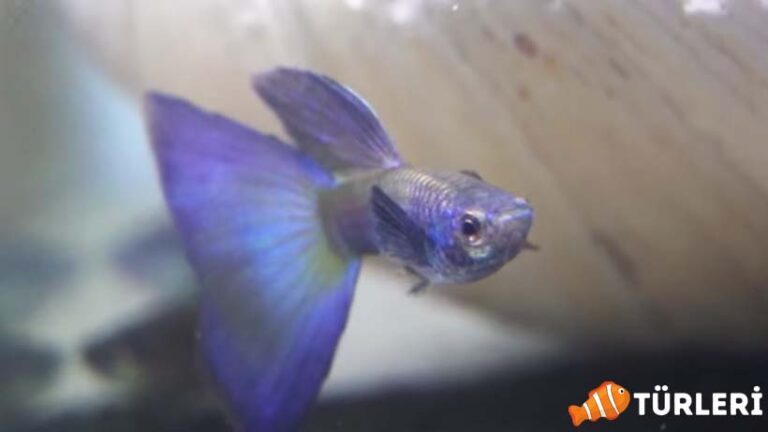Green Neon Tetra
The Green Neon Tetra, scientifically known as Paracheirodon simulans, is a small, colorful, and freshwater fish native to the blackwater rivers of South America. It belongs to the Characidae family and is closely related to the more common Neon Tetra (Paracheirodon innesi) and Cardinal Tetra (Paracheirodon axelrodi). This fish is a favorite among aquarists due to its vibrant colors and peaceful temperament.
Green Neon Tetra Fish Species Summary:
| Scientific Name: | Paracheirodon simulans |
| Origin: | Freshwater sources of South America, particularly in blackwater rivers. |
| Diet: | Omnivore (primarily eats small insects, algae, and plant matter; also needs high-quality flake food and frozen or live foods for supplementation) |
| Behavior: | Peaceful, schooling fish |
| Behavior Towards Their Own Species: | Prefers to stay in groups, generally non-aggressive. |
| Swimming Zone: | Middle to top |
| Water Temperature: | 23 – 28 °C |
| Water Hardness: | 1 – 10 GH |
| pH Level: | 5.5 – 7.5 |
| Minimum Aquarium Volume: | 38 Liters for a small school, larger is better |
| Adult Size: | 2 – 4 cm |
| Reproduction: | Lay adhesive eggs, usually on plant leaves or spawning mops |
| Lifespan: | Up to 5 years with proper care |
| Care: | Moderate, requires regular water changes, a balanced diet, and should be kept in groups for better health. |
Appearance
Green Neon Tetras have a sleek and slender body that is adorned with a striking iridescent green stripe that runs longitudinally from the tip of the nose to the base of the tail. This shimmering stripe is particularly bright and vibrant, making it a distinguishing feature of the species. The lower half of the body is a silver-white color, which contrasts beautifully with the green stripe. Additionally, the fins of the Green Neon Tetra are almost completely transparent, adding to the delicate and ethereal appearance of the fish. Unlike the regular Neon Tetra, which has a characteristic red stripe along the lower half of its body, the Green Neon Tetra lacks this red stripe, making its body predominantly green and silver-white. This vibrant green coloration and absence of the red stripe give the Green Neon Tetra a unique and eye-catching appearance that stands out in any aquarium.
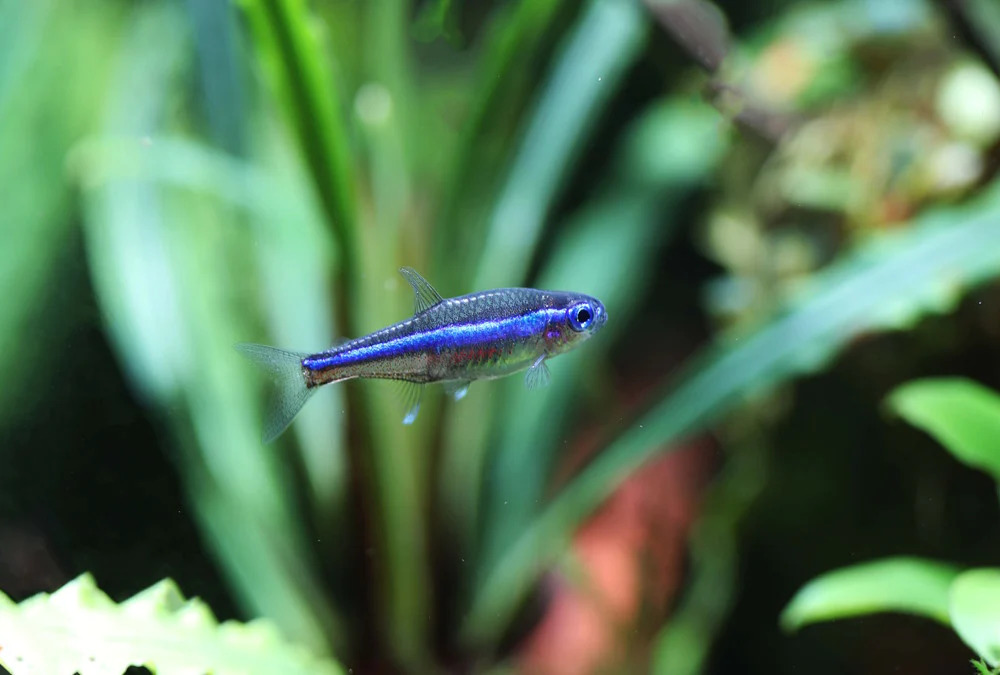
Tank Requirements
- Size: For a small group of Green Neon Tetras, a minimum tank size of 10 gallons is recommended. However, it is always better to opt for a larger tank as it not only provides more swimming space for the fish but also helps in maintaining better water quality. A larger volume of water can dilute toxins more effectively and is also more stable in terms of temperature and pH.
- Water Parameters: Green Neon Tetras thrive in soft, acidic water, similar to their natural habitat in the blackwater rivers of South America. The ideal water parameters for keeping Green Neon Tetras are a pH of 5.5-7.5, a water hardness of 1-10 dGH (degrees of general hardness), and a temperature range of 23-28°C (73-82°F). It is crucial to maintain these water parameters consistently to ensure the health and well-being of the fish.
- Filtration: A gentle filtration system is necessary to keep the water clean and free of harmful toxins without creating too much current. Green Neon Tetras prefer calm waters, and strong currents can cause them stress. A sponge filter or a hang-on-back filter with adjustable flow rate is usually suitable for a Green Neon Tetra tank.
- Decoration: Green Neon Tetras prefer a tank with plenty of hiding spots and cover. Use driftwood, rocks, and dense planting to create a natural and comfortable environment for the fish. Floating plants can also be used to diffuse the light and create a dappled effect on the water, mimicking their natural habitat. Additionally, dark substrate can help in highlighting the vibrant colors of the Green Neon Tetras.
Feeding
Green Neon Tetras are omnivorous, meaning they consume both plant and animal matter. In their natural habitat, their diet consists of small insects, algae, and plant matter, which provides them with a varied and balanced diet.
In the aquarium setting, it is important to replicate this varied diet as closely as possible to ensure they receive all the necessary nutrients for optimal health and coloration. High-quality flake food and micro pellets can form the base of their diet as these are specially formulated to provide the essential nutrients that fish need. However, it is also important to supplement this with frozen or live foods like brine shrimp, daphnia, and micro worms. These foods not only provide essential proteins and fats but also encourage natural foraging behavior.
It is also beneficial to occasionally include vegetable matter in their diet. Blanched spinach, zucchini, or cucumber can be offered occasionally. Algae wafers can also be a good option as Green Neon Tetras will naturally graze on algae in the wild.
Feeding should be done once or twice a day, giving only as much food as the fish can consume in about 2-3 minutes. Overfeeding should be avoided as it can lead to water pollution and health issues for the fish.
Remember, a varied diet is key to keeping Green Neon Tetras healthy and displaying their best colors.
Behavior and Tankmates
Green Neon Tetras exhibit schooling behavior, which means they prefer to swim and stay together in a group. This is a survival mechanism in the wild as it helps them to avoid predators by appearing as a larger entity. In the aquarium, this behavior also helps reduce stress and encourages natural interactions among the fish. Therefore, it is highly recommended to keep Green Neon Tetras in groups of at least 6-10 individuals. A larger group will help them feel more secure and display more natural behavior.
Green Neon Tetras are peaceful and non-aggressive, making them suitable to be kept with other small, non-aggressive fish. They generally keep to themselves and do not bother other fish in the aquarium. However, it is important to choose tankmates carefully to ensure a harmonious environment.
Ideal tankmates for Green Neon Tetras include other species of small Tetras, such as the Cardinal Tetra or Black Neon Tetra, as well as Rasboras, Corydoras catfish, and small peaceful Gouramis. These species are generally peaceful and will not pose a threat to the Green Neon Tetras. It is also important to avoid keeping them with large or aggressive fish, as they can become stressed or preyed upon.
In summary, Green Neon Tetras are peaceful schooling fish that should be kept in groups and can coexist harmoniously with other small, peaceful fish in the aquarium.
Breeding
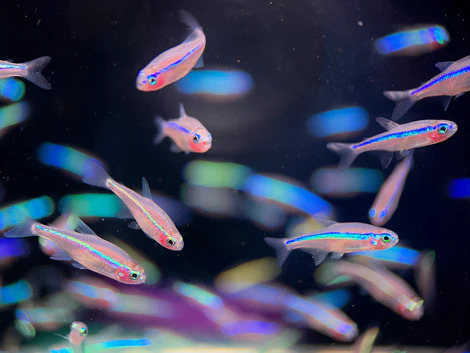
Breeding Green Neon Tetras can be somewhat challenging due to their preference for specific water conditions and the care required for the eggs and fry.
- Tank Conditions: The breeding tank should be set up with soft, acidic water with a pH of 5.0-6.0 and a temperature of 26-28°C (79-82°F). These conditions mimic their natural habitat and encourage spawning. It is also important to provide plenty of fine-leaved plants or a spawning mop as these provide a surface for the eggs to attach to. A dimly lit tank is also preferable as it creates a more relaxed environment for the fish.
- Spawning: Green Neon Tetras are egg layers and will usually spawn in the morning. The female will lay her eggs on the leaves of plants or on the spawning mop, and the male will fertilize them. It is common for the female to lay hundreds of eggs during a single spawning event.
- Post-Spawning Care: Once the eggs are laid, it is recommended to remove the parents from the tank as they may eat the eggs. The eggs are adhesive and will stick to the plants or spawning mop. They will hatch in about 24-36 hours, and the fry will be free-swimming in about 3-4 days.
- Feeding the Fry: The fry should be fed with infusoria or commercially available fry food for the first few days until they are large enough to accept regular food. As they grow, they can be gradually introduced to micro worms, baby brine shrimp, and finely crushed flake food.
It is important to maintain good water quality in the breeding tank and provide the fry with the appropriate food to ensure their healthy development. With proper care and attention, breeding Green Neon Tetras can be a rewarding experience for the dedicated aquarist.
Health
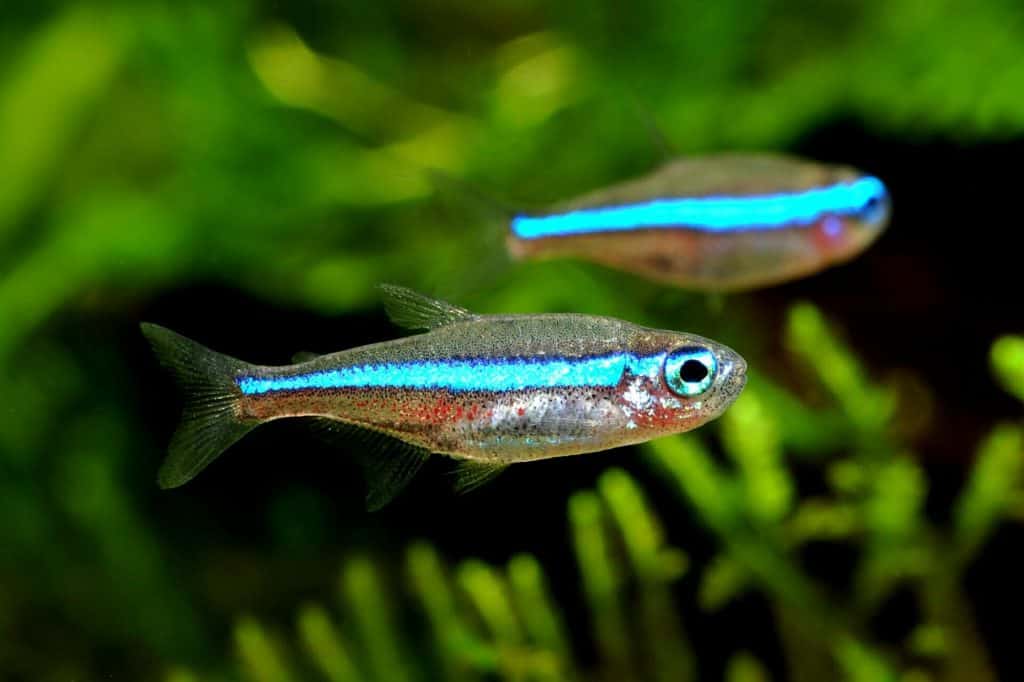
Green Neon Tetras are generally hardy and robust fish, but like all aquarium fish, they are susceptible to common fish diseases such as Ichthyophthirius multifiliis (Ich), fin rot, and neon tetra disease.
Ich is a parasitic infection that appears as white spots on the fish’s skin, gills, and fins. Fin rot is a bacterial infection that causes the fins to appear ragged and torn. Neon tetra disease is a protozoan infection specific to neon tetras and closely related species. It causes the fish to lose its color, develop cysts, and eventually die.
Maintaining good water quality is crucial in preventing these diseases. Regular water changes, proper filtration, and avoiding overcrowding will help keep the fish healthy. Additionally, providing a balanced diet with high-quality food will ensure that the fish receive all the necessary nutrients to maintain a strong immune system.
Quarantining new fish before adding them to the main tank is also essential to prevent the introduction of diseases. If any fish shows signs of illness, it is essential to diagnose and treat them promptly. Various treatments are available for common fish diseases, and it is advisable to consult a veterinarian or a fish expert for accurate diagnosis and treatment.
Green Neon Tetras are beautiful, peaceful, and active fish that can be a great addition to any community aquarium. They add a splash of color and movement to the tank and are relatively easy to care for. Proper care, including maintaining the right water parameters, providing a balanced diet, and keeping them in a group, will ensure that they thrive in your aquarium. With proper attention and care, Green Neon Tetras can live up to 5 years, providing a long-lasting and rewarding addition to your aquarium.

